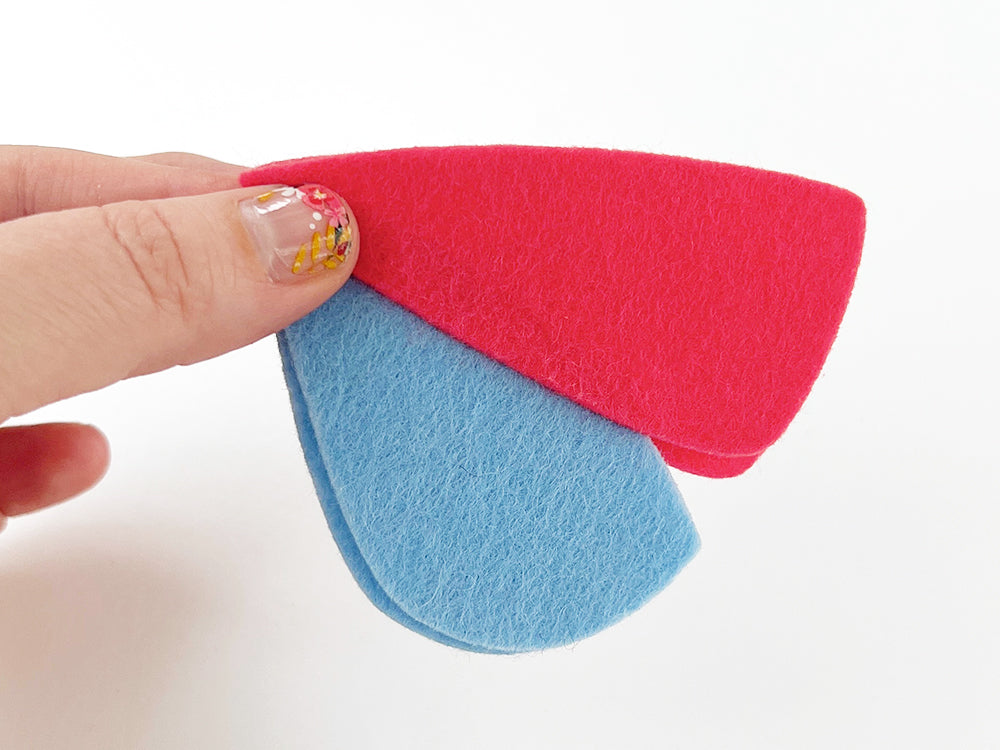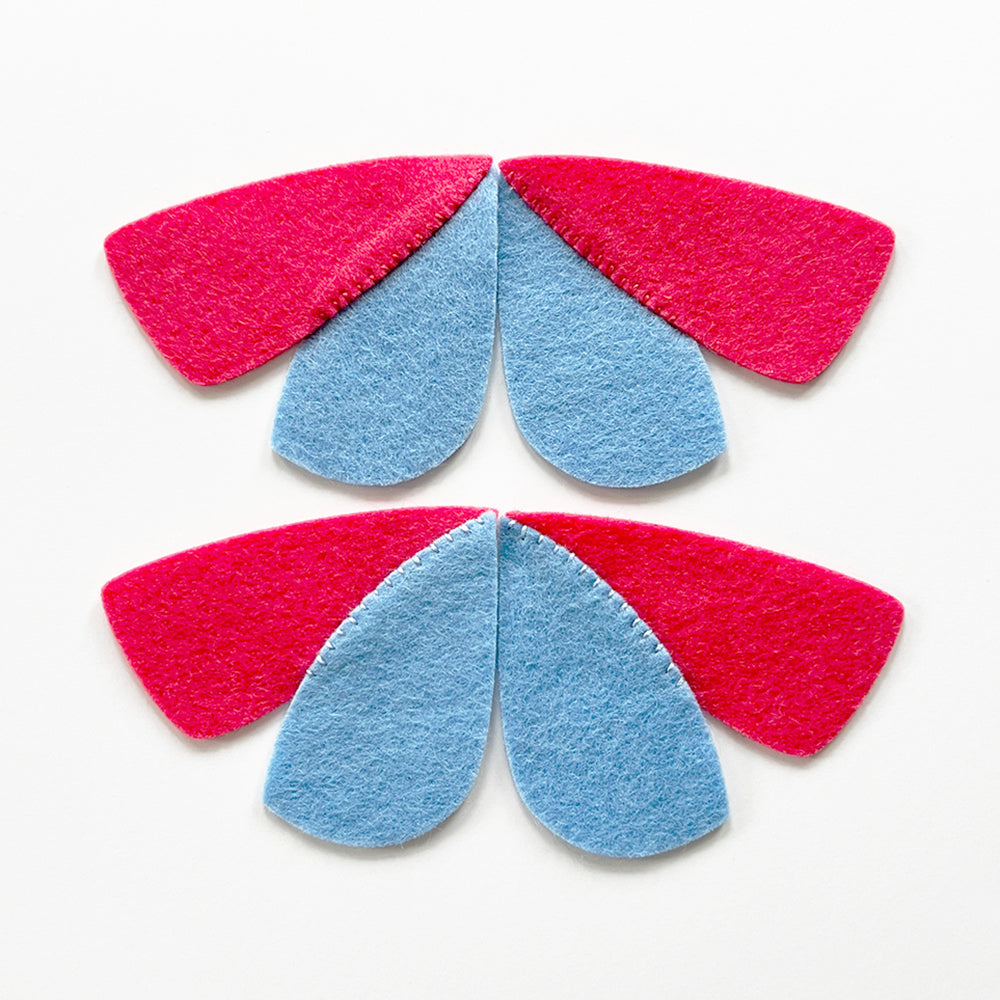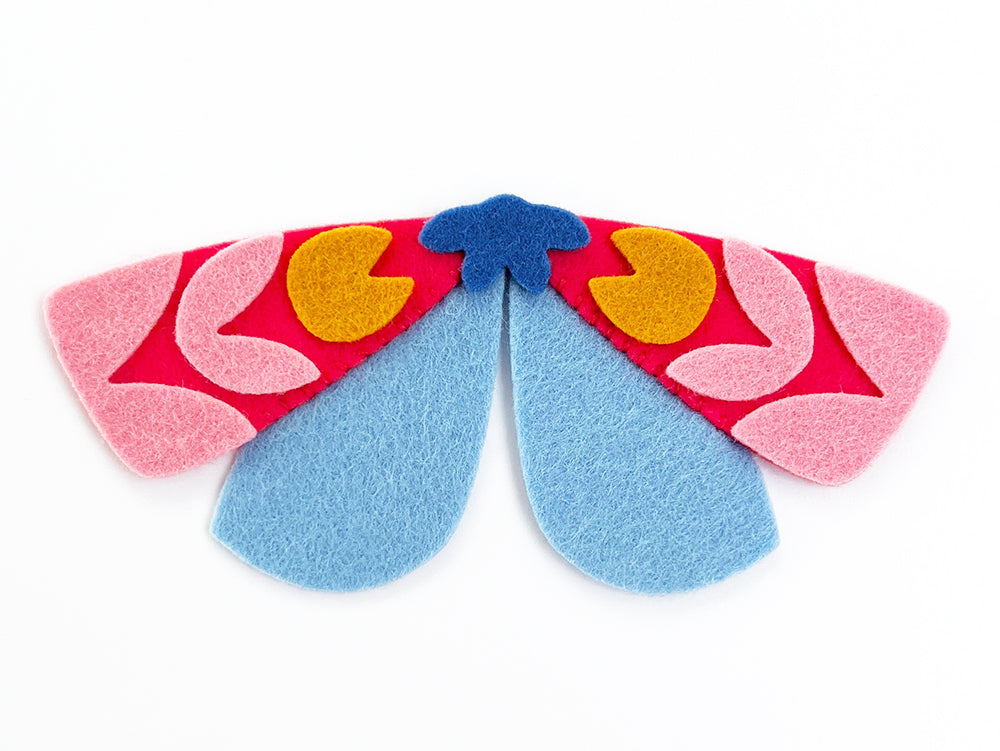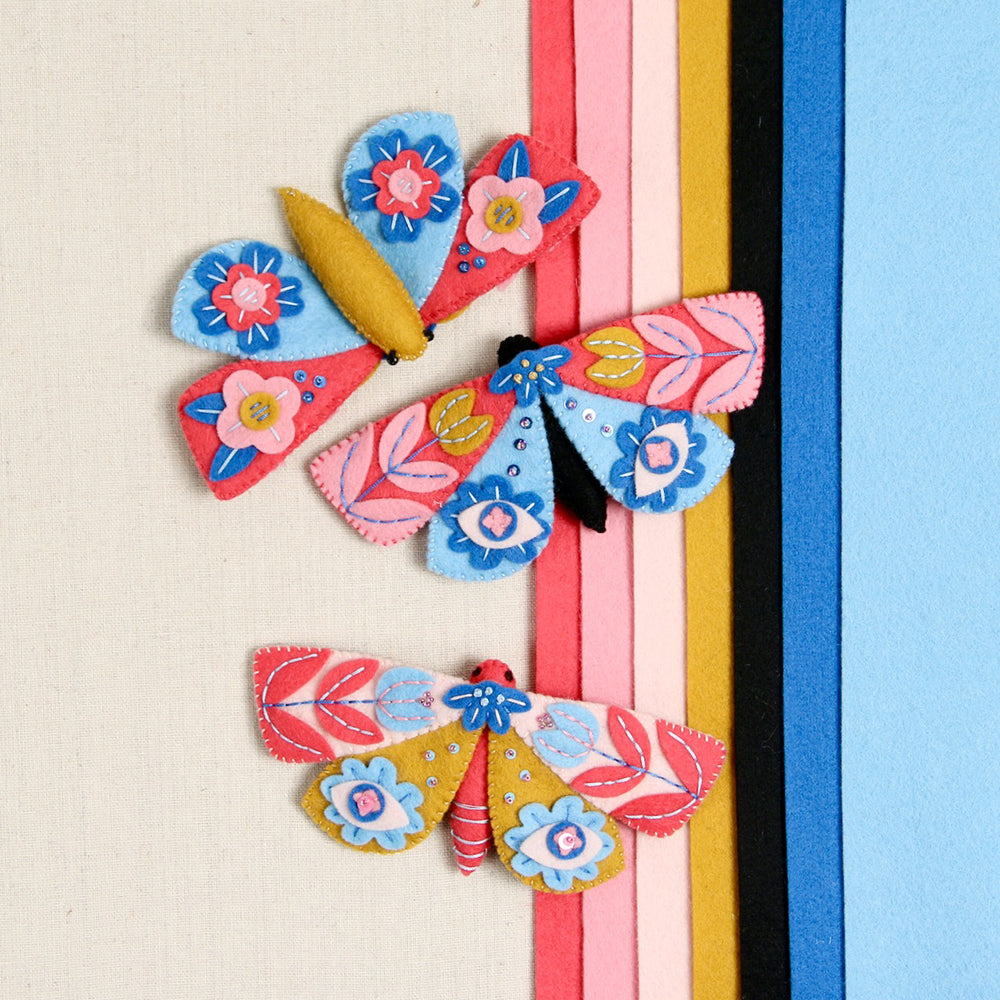Share

We are delighted to introduce our newest die set: Flora Moth. Flora Moth was designed by Erin Paisley and can be made into an ornament, wearable art or even an enchanting doll costume. Even though this is ranked as an intermediate project, Erin's thorough explanations make this approachable for an ambitious beginner. And if you think this moth is fabulous, be sure to meet her sister: Midnight Moth.
Additional Supplies:
Pattern Placement Guide (click to download)
Resealable Plastic Bags
Coordinating Sequins and Beads - optional
Needle, for beads - optional
Glue Stick - optional
Directions:
1. The Flora Moth die comes with many pieces and it is helpful to lay them out according to wing layers. Beginning with the Front Wing, use the die shapes show below. Cut two from the same color felt for the pieces marked.

2. Once Front Wing pieces are cut, set aside Top and Bottom Wings and place remaining pieces in a resealable plastic bag marked "Front" to keep them organized.
3. Cut Back Wing using the die shapes shown below. Cut the amounts indicated from the same color felt.

4. Set aside Top and Bottom Wings and place remaining Back Wing pieces in resealable plastic bag marked "Back."
5. Use Pattern Placement Guide (download above) and position Front and Back Wings as shown below.

The embossing lines also serve as a guide and can be highlighted with a disappearing ink pen.

6. Glue the overlapping areas together. A glue stick works well to hold felt in place while securing with stitches. The needle glides through easily, even when glue is dry. Hold wings back to back to ensure they line up properly. Adjust if necessary.

7. For the Front Wings, use a floss color that matches the Top Wing and whip stitch along the overlapping sections. For the Back Wings, use a floss color that matches the Bottom Wing and whip stitch along the overlapping sections. Set Back Wings aside.

8. Lay the Front Wings face down on the Placement Guide. Position a Top Flower in the center, where the two wings meet, and pin to both. Secure Wings and Flower by stitching through the corners and then over the top.

These stitches are for added strength and will not be visible on the finished moth. The light blue stitches are for clarity of instruction and can be replaced with a coordinating color.
9. Take the Front Wing pieces from the resealable bag and prepare the Top Wings. Position the felt pieces and glue in place.

10. Embroider along the embossing lines. Draw over them if they are difficult to see. Use back stitches to decorate the Top Flower, Tulips and Leaves. Back stitch between the Tulips and Leaves to create a stem.

11. Secure intersection of the Top Flower petals with a matching floss for added dimension. Embroider a cluster of French knots in the center.

12. For the Bottom Wings, place the Eye Flower as shown. Place Eye in the center with the narrower corner facing toward the center of the moth. The Eyes will be a reflection of each other on each wing.

13. Glue down pieces and sew through the layers beginning with the Eye Sparkle. Use a coordinating floss to sew four stitches around the center of the sparkle.

14. Using a contrasting floss, add stitches through the center of each Eye Flower petal.

15. If you want to add sequins and beads, sew them on at this point. The Front Wings are finished!

16. Prepare the Back Wings by placing Large Flowers on the Bottom Wings and Middle Leaves on the Top Wings. The Back Wings will remain individual pieces for the next steps. They will be connected to the Front Wings later.

17. Glue and embroider Large Flowers and Leaves making sure to leave enough room to sew around the wing edges later.

18. Position next layer, Top and Bottom Wing Flowers, and embroider in place.

19. Finally, use straight stitches or French knots to add Flower Centers. Add sequins at this point, if desired.

20. Place Front Wings face down. Place Back Wings on top, face up. Hold in place with glue, pins or clips and sew around the perimeter with coordinating floss. Hide knots between the layers.

21. Your Flora Moth wings are finished. If you do not want to add a body, you can add a Top Flower to the intersection of the Back Wings and stitch in place.

22. Make the Flora Moth into a proper bug ornament by adding a Body. Add decorative stitching and felt shapes to Body before stitching and stuffing.

23. There are three ways to add eyes to the rounded end of the Body - beads (1), paint (2), or satin stitch (3).

24. Sew Body to the Wings with a few stitches back and forth catching all layers.


I think I’m going to wear mine as a dashing bowtie, but it would make a really pretty brooch, hair clip, or ornament.

You can also mix and match pieces with the Midnight Moth Deep Etch Die! The possibilities are endless!
